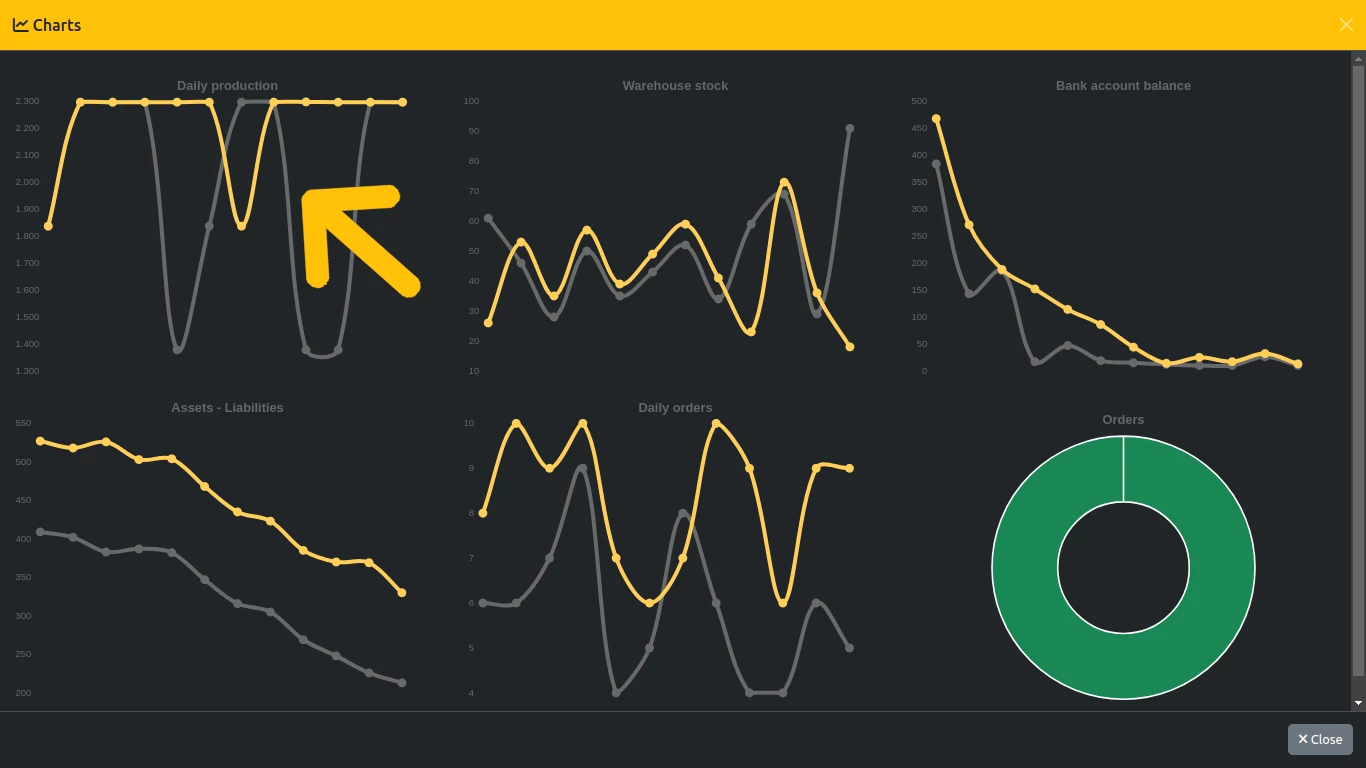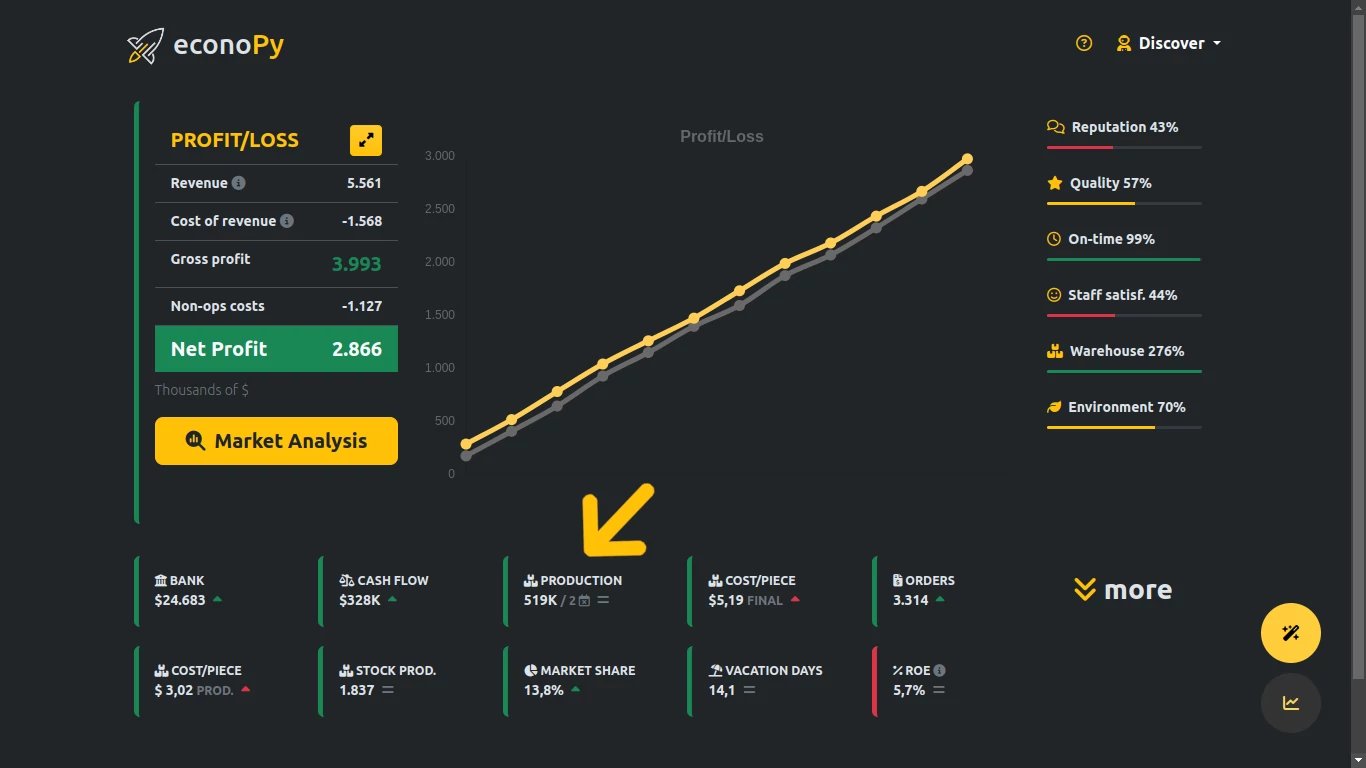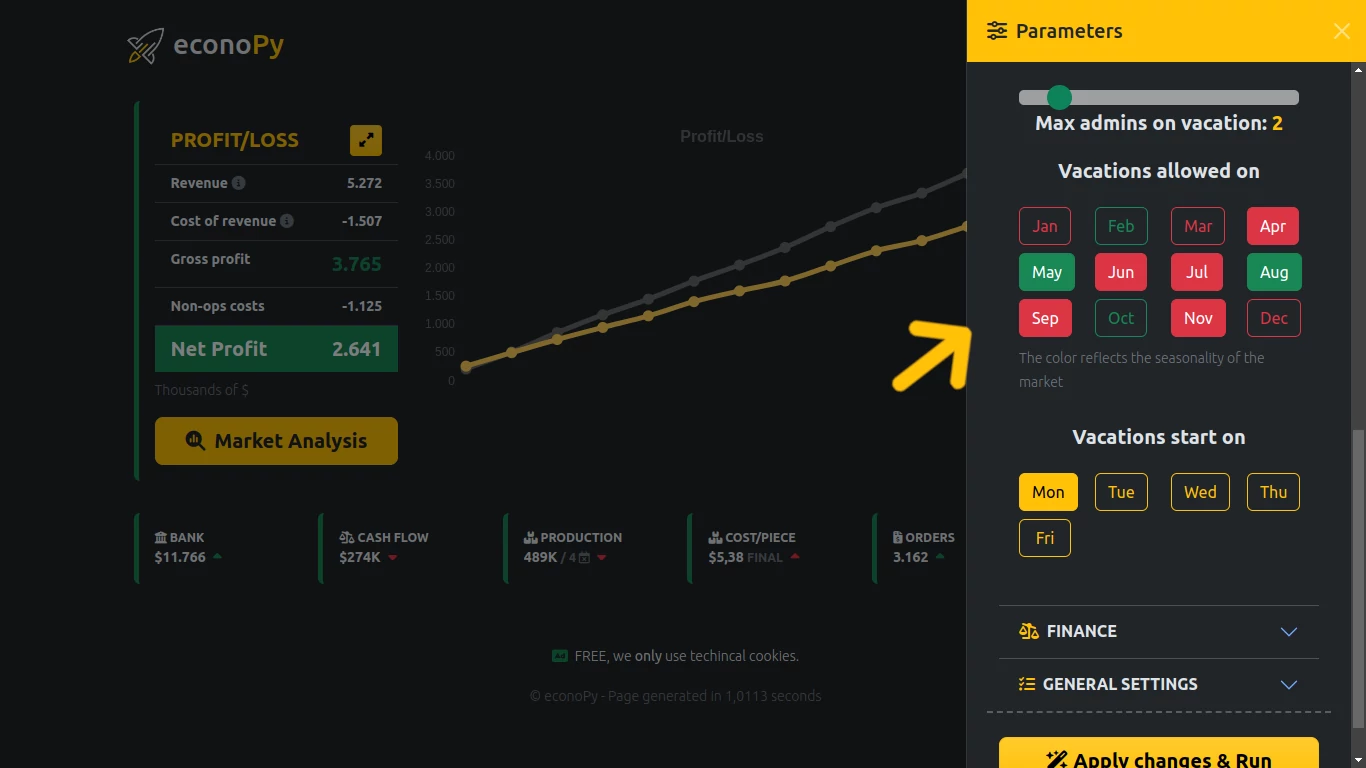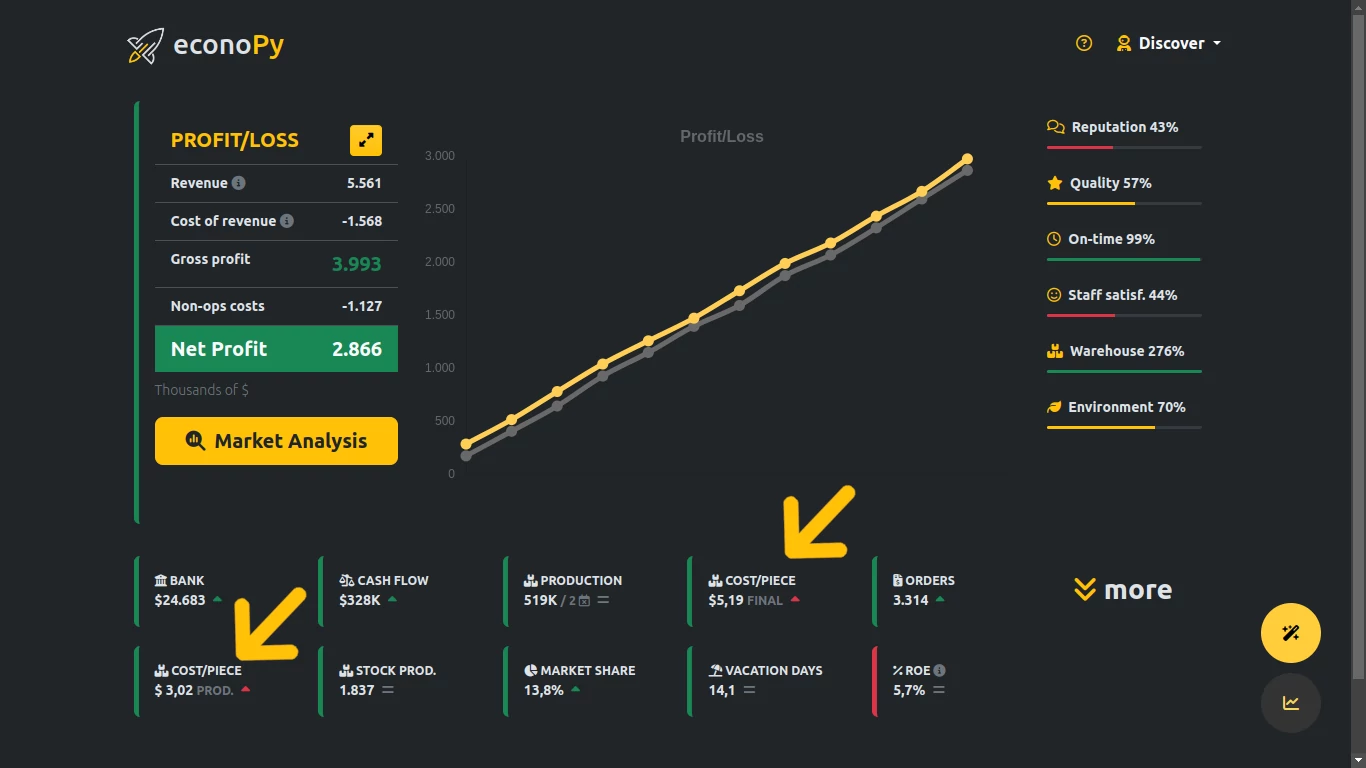Manufacturing Business Operations - Books&Co.
In a manufacturing company, production is the heart of the business. In this reading, we'll see how productivity impacts business results and what factors can influence it. The first concept we need to introduce when talking about production is "productivity." What does it mean? In our case, Books&Co produces books, but how many can it produce in an hour or a day? Productivity measures production per unit of time. It is usually expressed in hours or days. In econoPy, productivity is measured in the number of daily units. Click on the charts icon at the bottom right and observe the first chart in the top left, "Daily production".

As we can see from the chart, Book&Co's production fluctuates between 1,800 and 2,300 units per day.
What contributes to this number? There are two fundamental requirements without which production would otherwise stop:
- The presence of personnel
- The availability of material stocks
If even one of these two factors is missing, production stops.
We will see these two aspects individually in the next readings.
Factors that improve productivity
- General staff satisfaction
- Machinery
- Quality of raw materials
- Proper vacation planning
- Staff training
- Regular supply of materials for production
- Punctuality of supplies
Conversely, if these factors decrease, they lead to a decrease in productivity.
Try modifying the following factors, one at a time, to recognize the impact on productivity:
Lower the number of employees from 5 to 2 (productivity will decrease)
Human resources WorkersIncrease training from 1 to 5 (productivity will increase)
Human resources TrainingIncrease machinery from 5 to 7 (productivity will increase)
Production MachineryLower the reorder level from 60% to 10% (productivity will decrease)
Production Reorder thresholdOn the main screen, you can view the total number of units produced during the year and the number of days production stopped due to lack of materials or personnel.

Vacation Management
As we saw in the market section, the company must be ready to face demand peaks, so vacation planning must take into account that in months with high seasonality, it is inadvisable to grant vacations, and it is appropriate to avoid too many workers going on vacation at the same time to avoid being unable to fulfill orders.

Unit Production and Company Cost
The unit production cost (i.e., production costs alone divided by the number of units produced) cannot be higher than the selling price. If this happens, the company has a serious structural problem and will need to be restructured.
You can monitor the unit production cost and the unit company cost in the boxes shown in the figure. The unit company cost represents the sum of all costs incurred by the company (production + administration + marketing + financial charges) divided by the number of units produced. If this number is lower than the selling price, then the company will have a profit; otherwise, each unit produced and sold will constitute a loss.

As we saw from the market reading, the company's offer is based on:
- Quality / price ratio
- Delivery times
- Reputation
- Payment terms
Quality / Price
High production costs and low quality will negatively impact the company's offer and consequently sales.
Delivery Times
Offering delivery times that are too long will discourage time-sensitive customers, but offering short times without being able to meet them will first lead to order cancellations and then a decline in company reputation.
Reputation
Reputation plays an important role and is something that the company usually builds over a very long period but can lose very quickly with significant economic damage. Keeping promises made to customers and becoming a reliable supplier is certainly a way to build good foundations for continued collaborations and consistent turnover.
Payment Terms
Considering that the cost of materials represents one of the major items on the balance sheet with a significant financial commitment, paying suppliers before customer invoices are collected can lead to financial imbalance.
In summary
As mentioned earlier, doing business is solving a sizing problem. Therefore, sizing production in the optimal way (number of employees, machinery, and stock reorder criteria) allows keeping costs under control and guaranteeing the level of service required by customers.
In a company operating in a market focused on price and quantity, economies of scale will dictate production factors to maximize units produced and decrease average unit cost.
Conversely, in a company operating in a sector aimed at maximum quality, attention will need to be focused on factors that guarantee the highest standards of quality and reputation. Both the unit production cost and company cost must be lower than the selling price to obtain a profit from sales.
Keywords: manufacturing productivity, daily unit output, production factors, personnel management, material availability, operational efficiency, cost optimization delivery times, market competitiveness, business profitability, manufacturing strategies, production planning, supply chain management, quality control, manufacturing performance metrics.